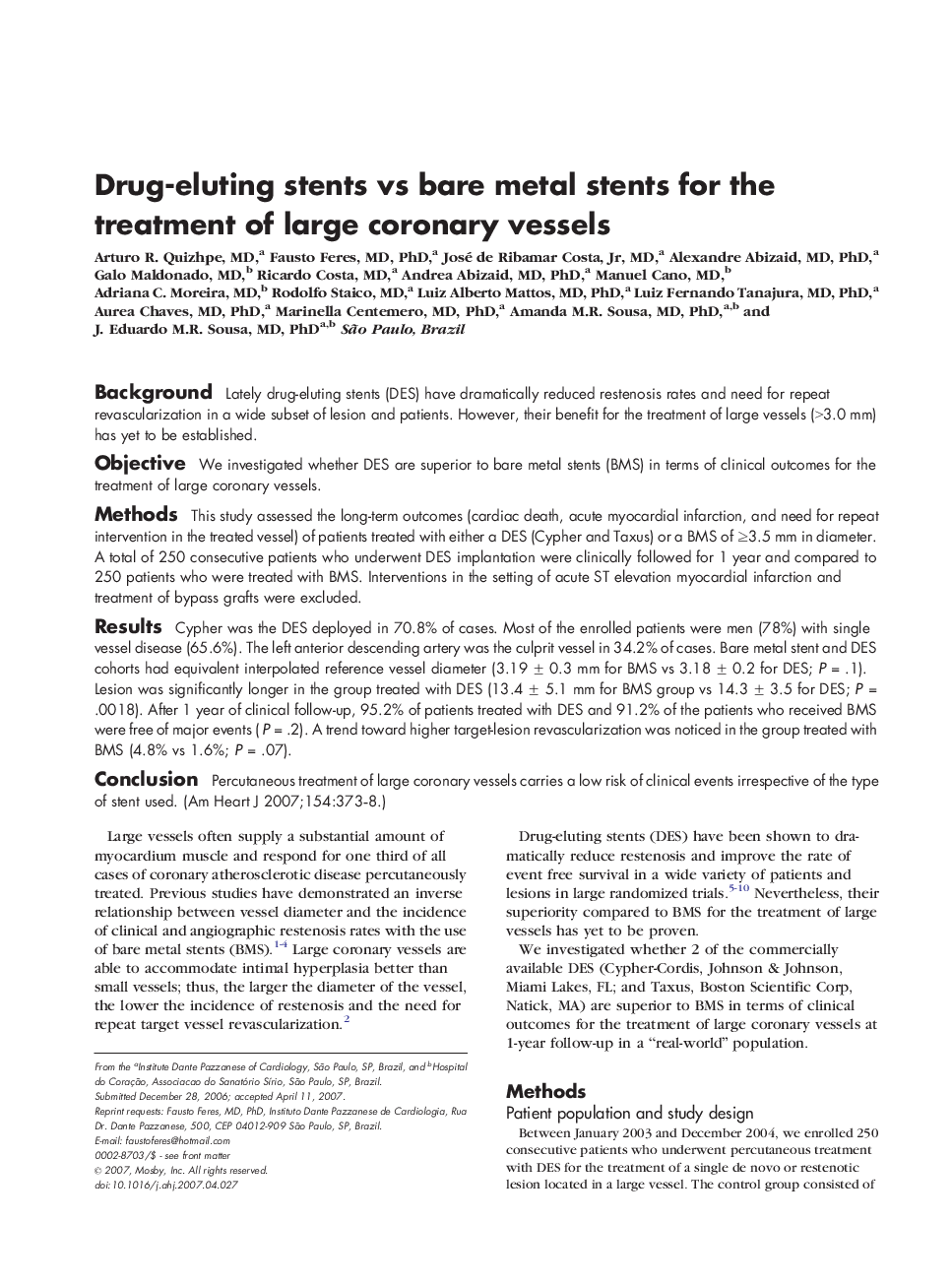| کد مقاله | کد نشریه | سال انتشار | مقاله انگلیسی | نسخه تمام متن |
|---|---|---|---|---|
| 2851549 | 1167853 | 2007 | 6 صفحه PDF | دانلود رایگان |

BackgroundLately drug-eluting stents (DES) have dramatically reduced restenosis rates and need for repeat revascularization in a wide subset of lesion and patients. However, their benefit for the treatment of large vessels (>3.0 mm) has yet to be established.ObjectiveWe investigated whether DES are superior to bare metal stents (BMS) in terms of clinical outcomes for the treatment of large coronary vessels.MethodsThis study assessed the long-term outcomes (cardiac death, acute myocardial infarction, and need for repeat intervention in the treated vessel) of patients treated with either a DES (Cypher and Taxus) or a BMS of ≥3.5 mm in diameter. A total of 250 consecutive patients who underwent DES implantation were clinically followed for 1 year and compared to 250 patients who were treated with BMS. Interventions in the setting of acute ST elevation myocardial infarction and treatment of bypass grafts were excluded.ResultsCypher was the DES deployed in 70.8% of cases. Most of the enrolled patients were men (78%) with single vessel disease (65.6%). The left anterior descending artery was the culprit vessel in 34.2% of cases. Bare metal stent and DES cohorts had equivalent interpolated reference vessel diameter (3.19 ± 0.3 mm for BMS vs 3.18 ± 0.2 for DES; P = .1). Lesion was significantly longer in the group treated with DES (13.4 ± 5.1 mm for BMS group vs 14.3 ± 3.5 for DES; P = .0018). After 1 year of clinical follow-up, 95.2% of patients treated with DES and 91.2% of the patients who received BMS were free of major events (P = .2). A trend toward higher target-lesion revascularization was noticed in the group treated with BMS (4.8% vs 1.6%; P = .07).ConclusionPercutaneous treatment of large coronary vessels carries a low risk of clinical events irrespective of the type of stent used.
Journal: American Heart Journal - Volume 154, Issue 2, August 2007, Pages 373–378